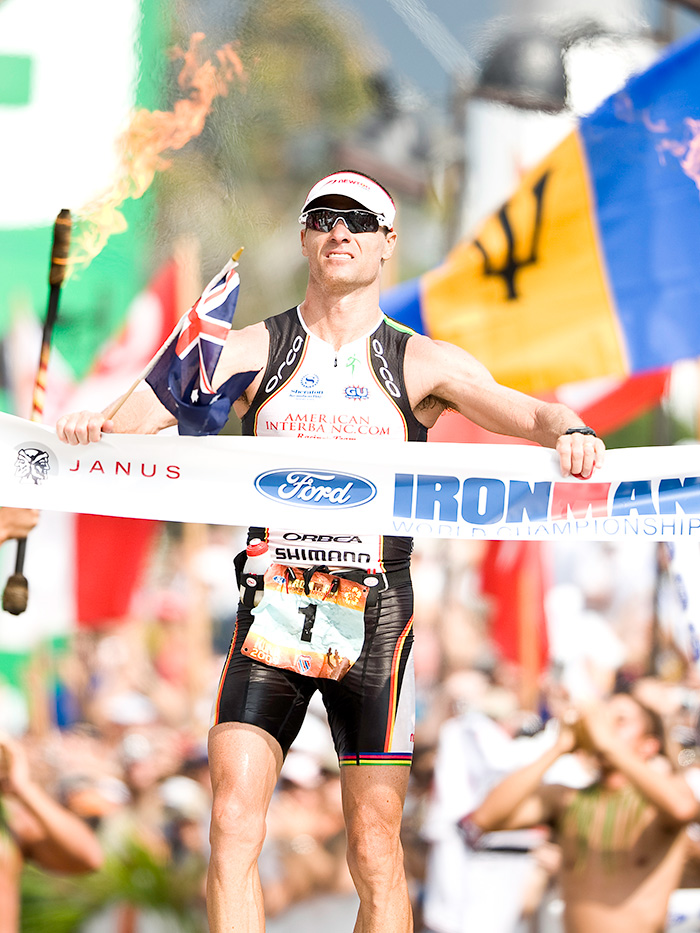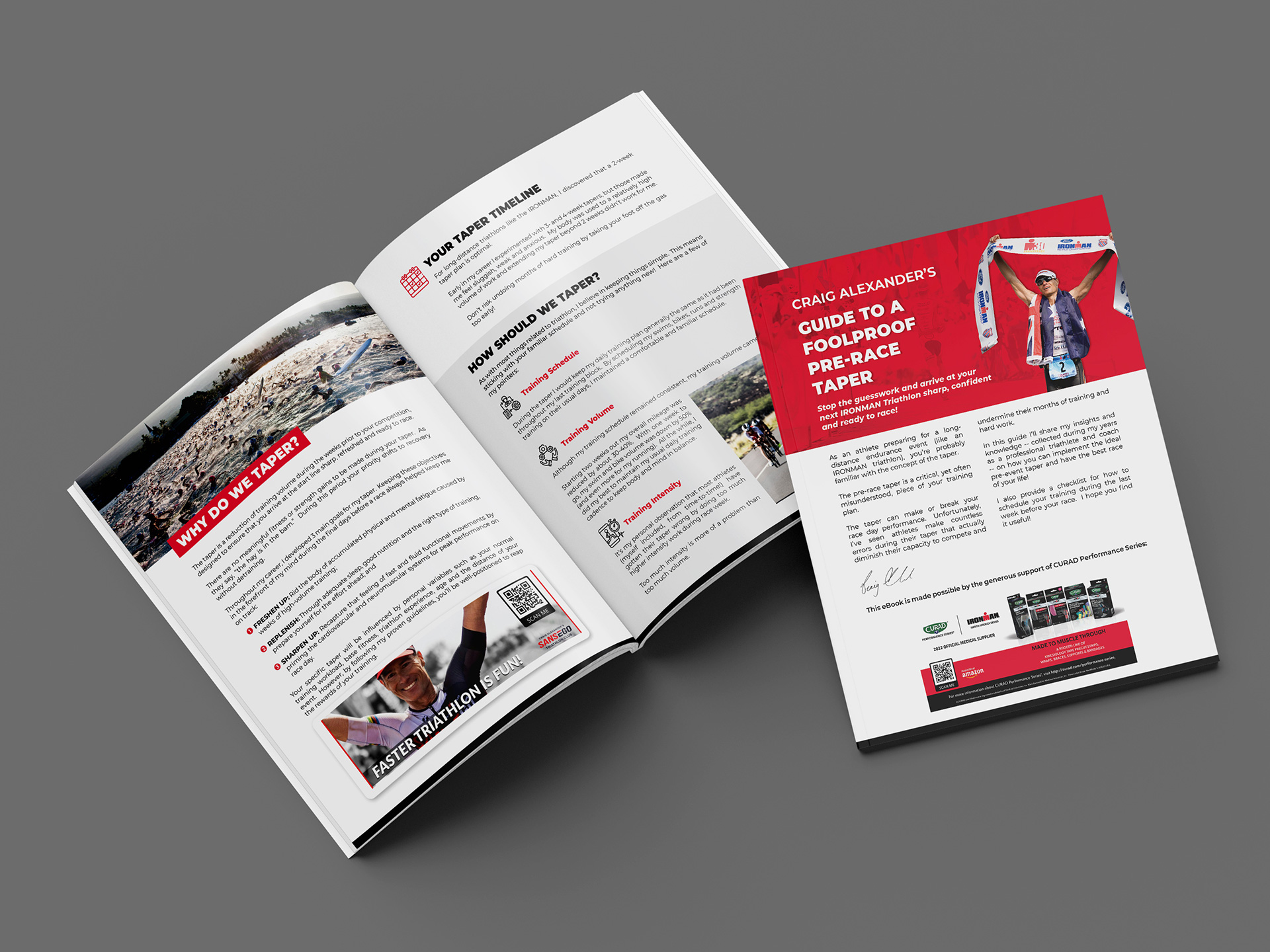
Craig Alexander’s Guide to an Effective Pre-Race Taper
As an athlete preparing for a long-distance endurance event (like an IRONMAN triathlon), you’re probably familiar with the concept of the taper. The pre-race taper is a critical, yet often misunderstood, piece of your training plan. It can make or break your race day performance. Unfortunately, I’ve seen athletes make countless errors during their taper that actually diminish their capacity to compete and undermine their months of training and hard work.
In this guide I’ll share my insights and knowledge — collected during my years as a professional triathlete and coach — on how you can implement the ideal pre-event taper and have the best race of your life!
Why Do We Taper?
The taper is a reduction of training volume during the weeks prior to your competition, designed to ensure that you arrive at the start line sharp, refreshed and ready to race. There are no meaningful fitness or strength gains to be made during your taper. As they say, “the hay is in the barn.” During this period your priority shifts to recovery without detraining.
Throughout my career, I developed 3 main goals for my taper. Keeping these objectives in the forefront of my mind during the final days before a race always helped keep me on track:
- Freshen up: Rid the body of accumulated physical and mental fatigue caused by weeks of high-volume training;
- Replenish: Through adequate sleep, good nutrition and the right type of training, prepare yourself for the effort ahead; and
- Sharpen up: Recapture that feeling of fast and fluid functional movements by priming the cardiovascular and neuromuscular systems for peak performance on race day.
Your specific taper will be influenced by personal variables such as your normal training workload, base fitness, triathlon experience, age and the distance of your event. However, by following my proven guidelines, you’ll be well-positioned to reap the rewards of your training.
Your Taper Timeline
For long distance triathlons like the IRONMAN, I discovered that a 2-week taper plan is optimal.
Early in my career I experimented with 3- and 4-week tapers, but those made me feel sluggish, weak and anxious. My body was used to a relatively high volume of work and extending my taper beyond 2 weeks didn’t work for me. Don’t risk undoing months of hard training by taking your foot off the gas too early!
How Should We Taper?
As with most things related to triathlon, I believe in keeping things simple. This means sticking with your familiar schedule and not trying anything new! Here are a few of my pointers:
Training Schedule
During the taper I would keep my daily training plan generally the same as it had been throughout my last training block. By scheduling my swims, bikes, runs and strength training on their usual days, I maintained a comfortable and familiar schedule.
Training Volume

Although my training schedule remained consistent, my training volume came down. Starting two weeks out my overall mileage was reduced by about 30-40%. With one week to go, my swim and bike volume was down by 50% (and even more for my running). All the while, I did my best to maintain my usual daily training cadence to keep body and mind in balance.
Training Intensity
It’s my personal observation that most athletes (myself included, from time-to-time!) have gotten their taper wrong by doing too much higher intensity work during race week. Too much intensity is more of a problem than too much volume. During the last 10 days before a race, I would limit my training intensity to nothing higher than my target race pace. These abbreviated sessions allowed me to keep my neuromuscular system primed while reducing the risk of fatigue or injury. I certainly wasn’t doing VO2 Max intervals!
What About Strength Training?
As most of you know, I’m a huge proponent of year-round strength and mobility training. The trick is to modify your routine according to your objectives. During the taper period, I maintained my normal strength training schedule for as long as possible. My body was accustomed to lifting weights so I usually performed strength training through Tuesday of race week.
I would reduce the load to 30% less weight and do just one set of each exercise; this maintained my strength training schedule while avoiding any muscle soreness. It was also an effective tool for managing pre-event stress. Of course, my focus was on maintenance and reinforcing proper movement patterns… NOT lifting heavy weights or training to exhaustion! I would also include 2 to 3 core stability and activation routines during race week (including one session immediately after traveling to an event to get everything “switched back on”).
Taper Nutrition
Again, keep things simple! Be cognizant that pre-race nerves and the disruption caused by travel can promote poor eating, so avoid that as best as you can. With lower training loads and less energy expended, oftentimes my appetite was slightly reduced during the taper. However I never counted calories or stressed over my weight; I was always guided by my hunger and would eat well. It’s vital to arrive at the race replenished and full of energy.
A word about hydration: Many athletes over-hydrate before a race, thinking they can “top the tanks” for the big day. This risks upsetting their electrolyte balance and undermining their performance. Even for events in hot, humid climates (like Hawaii!), I was careful not to overdo my pre-race hydration in the final days leading up to the competition. As always, balance and moderation were key.
My 7-Day Plan
My taper philosophy is simple and straightforward, focusing on freshening, replenishing and sharpening your body and mind. Follow the principles that I’ve outlined above, and you can construct an effective pre-race taper that will unlock your best possible race day performance.

To jumpstart the creation of your personal taper plan:
See you at the races!
Crowie
Craig “Crowie” Alexander is the 3x winner and former course record holder of the Hawaii Ironman Triathlon World Championship. He is also a 2x winner of the Ironman 70.3 World Championship. One of the most successful triathletes in history, Crowie won over 100 professional races. Currently he oversees his global Sansego Triathlon Club and coaching business from Sydney, Australia.
